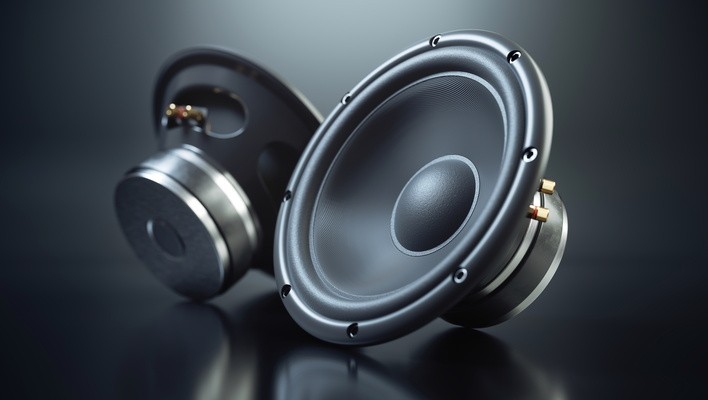When shopping for a new subwoofer, size is one of the critical factors to consider. Besides having an impact on the space available, the size of the subwoofer determines how loud or low the speaker can go. It also influences the sound quality, power usage, bass, and distortion the subwoofer produces.
10 inch vs 12 inch subwoofers is a heated debate that’s not ending any time soon. Although these two subwoofers are similar in many ways, there are slight differences that affect their performance and usability.
This guide provides an in-depth explanation of how 10 inch and 12 inch subs compare to help you make an informed decision.
What Is a Subwoofer?
A subwoofer is a loudspeaker designed to play the lowest bass frequencies in the range of 20Hz to 200 Hz. Unlike ordinary speakers, a subwoofer allows produce clarified lows that make your music come alive.
A subwoofer converts electrical signals from the amplifier into audible sound by creating an air pressure difference in front of the speakers.
10-Inch Subwoofers
Subwoofers of this size are one of the most preferred due to their ease of installation and compactness. They work best with Jazz, blues, metal, and pop music genres.
12-Inch Subwoofer
12-inch subwoofers can handle a wide variety of music. They work perfectly with many frequencies. They also generate some extra bass. 12 inch subwoofers are less responsive thanks to their vast size. They are also not a good fit for small cars as they intrude theq1
9 passenger and cargo space. These subs are also slightly tricky to install due to their immense size.
A 12-inch subwoofer works best with slow-paced music, for example, RnB, Blues, and Rap.

Differences Between a 10 Inch and 12-Inch Subwoofer
The primary difference between these two speaker systems is in the amount of bass they produce. 12-inch subs have more bass than 10-inch subs. Since 12-inch subwoofers are naturally more extensive than their counterparts, they can push more air, making them louder than 10-inch subs. The bigger the driver, the easier it is to produce the low frequencies.
10 inch subwoofers are more controlled and accurate than 12 inch subwoofers. This is because 10 inch subwoofers are cleaner and tighter compared to 12 inch subwoofers. They are also made of smaller drivers that contain large cones meant to increase SPL and sensitivity.
More power is required to run a 12-inch subwoofer than a 10-inch sub. The larger the driver, the more amplifier current and magnetic energy are needed to influence and control the piston motion.
10 inch subwoofer is easier to install since it can be placed in factory locations with minor to no modifications, which is impossible with 12-inch subs.
12-inch subwoofers distort more compared to the 10-inch sub. This is because of the large surface area that is harder to control than that in the 10 inch sub.
12-inch subs are more efficient than 10-inch subs. Simply put, the small driver in 10-inch subs will have to move far to produce the same amount of bass that a 12-inch sub produces at the same level.
While 10-inch subwoofers respond better at higher frequencies, 12-inch subwoofers respond better at lower frequencies. This is because smaller drivers tend to have a good response up high, whereas bigger drives tend to have a good response down low.
The 12 inch subwoofer usually is heavier, more extensive, and consumes more power, whereas the 10 inch subwoofer is lighter, smaller, and consumes less power.
Which of the Two Subwoofers Should You Go For?
The question of whether a 10 inch or 12-inch subwoofer is better for you depends on your needs and preferences. The right subwoofer for you will be the one you can comfortably power and fits your available space and budget.
While a more significant subwoofer driver is guaranteed to achieve more outstanding bass, it’s not the only way. The subwoofer’s performance is based on many other factors such as enclosure, power handling capability, sensitivity, OHMs, among others.
For example, the frequency extension is naturally more affected by the enclosure size than the driver size. Larger enclosures offer the lowest frequency extension compared to small enclosures.
You may Also Read: How to Wire 2 Subs to a Mono Amp (With Wiring Diagrams)
The environment in which you intend to use your subwoofer also dramatically affects its performance. For example, you may not notice any difference between a 10-inch sub and a 12-inch sub when using it in a car since the space between you as the listener and the sub is minimal. This is, however, not the case when using the sub in your house. In such a case, a 12-inch sub will offer you more bass than a 10-inch sub.
You can also achieve more outstanding results with your small subwoofer driver by increasing the power. For instance, a 10 inch subwoofer in a small box can sound like a 12 inch in a big container if it had more energy.
